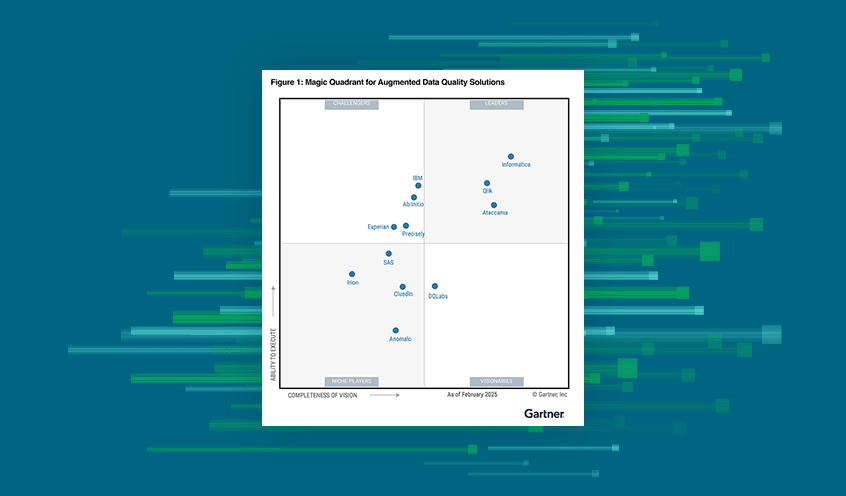One of the fastest-growing trends in the datasphere today is the development and use of data products. As we move deeper into 2025 and beyond, data product usage is going to explode. In fact, according to the Gartner® 2024 Hype Cycle for Data Management, Data Products are currently at the Peak of Inflated Expectations, signaling strong interest and rapid evolution in this space. You can download the entire report here.
The advantages and impact of this new paradigm extend beyond data engineers. This is because when it comes to high-quality, domain-centric data, data engineers — while quite instrumental in composing a data product — are just a part of a bigger data product team that is responsible for putting the data product together.
Here are five key reasons why data products are valuable for analytics consumers:
Feel confident in data quality and know assets are trustable for your use case. Data products are tailored to address specific business needs or user demands, going beyond raw data to include contextual information like definitions, lineage, and quality checks. This makes them more relevant and valuable to data consumers, especially analytics users. For example, a marketing analyst at a retail company needs customer segmentation data for a new campaign. Instead of manually cleaning raw customer data from multiple sources, they use a Customer Segmentation Data Product that already includes verified customer attributes, deduplicated records, and pre-applied data quality checks, ensuring accurate insights.
Find assets faster and extract value more quickly. Data products are designed to boost value and ease consumption. They are curated and packaged to be readily consumable by domain-specific data consumers with limited technical expertise, making them user-friendly. For example, a financial analyst wants to analyze revenue trends but isn't sure where to find the right datasets. Instead of searching through raw transaction logs, they access a Revenue Metrics Data Product in the Qlik Data Marketplace, which provides pre-aggregated revenue data, clear definitions, and business context, helping them extract insights quickly.
Streamline workflows with one-stop shopping. Discovery isn’t just finding the dataset, but also the association for that dataset. As an analyst, you must load the data into the analytical tool quickly, and connect the datasets together — using fact tables and dimension tables to express and show the value. Data products are like a house -building kit that contains all the materials. Everything analysts need comes pre-packaged. For example, a supply chain analyst needs to analyze supplier performance. Instead of manually merging supplier ratings, delivery times, and cost data from different systems, they use a Supplier Performance Data Product, which includes all relevant metrics and relationships pre-defined, allowing for easy integration into their analytics tool.
Enrich and accelerate app development. Because curated datasets, transformations, data quality rules, and other data product artifacts are to go with a data product, analytics users can build richer downstream apps like dashboards or analytics apps. For example, a business intelligence (BI) developer is building a sales dashboard. Instead of transforming raw sales data in SQL, they use a Sales Analytics Data Product, which already includes cleaned and transformed sales data, and pre-calculated profit margins. This allows them to focus on analyzing and actioning the insights from the data.
Reduce costs associated with analytics. Data products are searchable, reusable, and sharable. That means you can utilize the same data product for multiple use cases, saving time and money. For example, a healthcare company needs patient data for multiple reports, from hospital admission rates to treatment effectiveness. Instead of each team creating separate datasets, they use a Patient Outcomes Data Product designed for multiple use cases to reduce redundant data efforts and save costs.

Data products deliver even more value for Qlik Analytics™ users, especially Qlik Sense® users. Here are three reasons why:
Seamless Integration and App Launch from Data Products. Qlik Sense users can launch analytics apps directly from data products, ensuring these apps start with well-structured, high-quality data assets. This accelerates data discovery and cuts time spent finding data to build analytics apps for a specific use-case.

End-to-End Data Management for Trusted Insights. Qlik offers a unified solution spanning data movement, transformation, trust, access, analytics, and AI. For example, with end-to-end lineage, users can track data from a CRM system, first through ingestion and transformation, then into a high-quality data product, and finally into a Qlik Sense app. Qlik’s comprehensive platform makes it a Gartner® Magic Quadrant™ Leader in three areas: Data Integration Tools (2024), Augmented Data Quality (2025), and Analytics and Business Intelligence Platforms (2024).
Faster Access to Relevant Data Products including QVD Support. Data products in Qlik offer first-class native support for QVD data files. QVD files are well known to Qlik Analytics users, and by bunding the QVDs, scripts, and model files into a single data product, organizations can streamline data access and accelerate analytics app development. Learn even more about this benefit by attending the “Taming Your QVDs: From Chaos to Clarity” session at Qlik Connect 2025.
“Companies that treat data like a product can reduce the time it takes to implement it in new use cases by as much as 90%, decrease their total cost of ownership (technology, development, and maintenance costs) by up to 30%, and reduce their risk and data governance burden.”
— Harvard Business Review, July/August 2022
So how do you get access to these amazing things? Best practices suggest that to successfully build data products, you need to begin with the business outcomes first and then work backward to engineer the data product. For example, if the goal is to reduce customer churn by 15%, begin by identifying the key churn indicators (e.g., usage patterns, support tickets, payment history), then determine the data sources needed, and finally build the pipelines to aggregate and analyze that data effectively.
Start by working with your data product manager or talk to your data team. You may find that they’re already thinking about this kind of concept. If they’re not, consider becoming an evangelist for the use of data products in your organization, because everyone wins.
Learn, play, adopt: How Qlik can help
Looking for hands-on experience to confidently pitch the value of data products to your Chief Data Officer or Chief Data and Analytics Officer? There’s no better place to start than an interactive tour of data products, courtesy of Qlik. In this eye-opening interactive tour, you take a seat as a data product manager at Bricoworld, a fictional logistics and shipping retailer, and experience some key data product capabilities in Qlik Talend Cloud® firsthand. Afterward, you’ll be ready to champion the adoption of data products in your organization and accelerate business outcomes.
If your company has a clear data strategy, is facing challenges with existing infrastructure, requires more flexible ways of consuming data, is diving into advanced analytics or machine learning, and fosters cross-functional collaboration, it’s likely ready to embrace data products. These products empower your teams to access and act on data more efficiently, while ensuring that the insights they provide align with both business use cases and technical requirements.
When data is treated as a valuable asset and accessible to everyone, data products can drive transformation, increase efficiency, and unlock new opportunities for growth. If you’re ready to pursue proven value, enabling this unique, product-centric approach is easier and closer than you think. Qlik Talend Cloud has built-in data product capabilities made to unlock your data’s value and accelerate domain-specific business outcomes. Learn more about our solutions.
This post is part four of the multipart series, Data Product Perspectives. Additional entries are available here
In this article:
Analytics












































